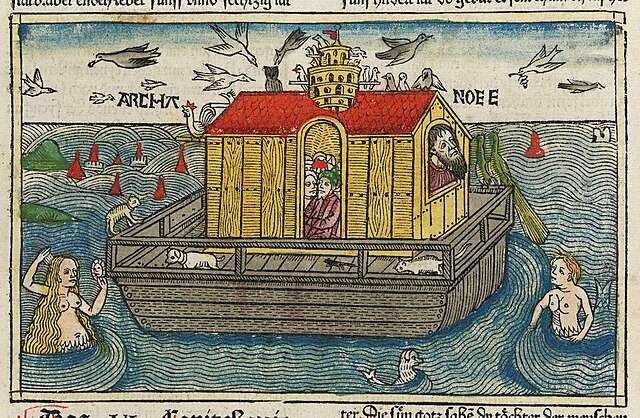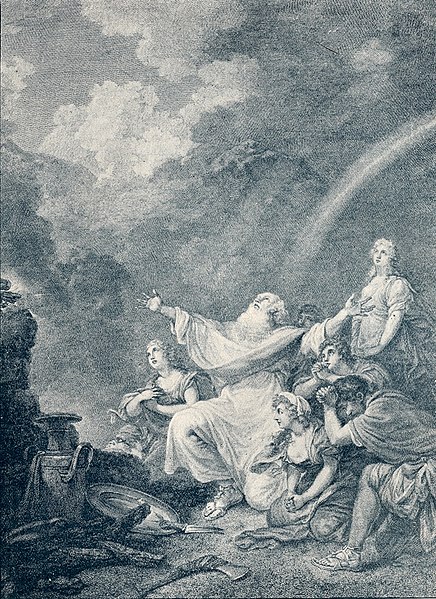Noah's Ark is the ship in the Genesis flood narrative through which God spares Noah, his family, and examples of all the world's animals from a global deluge. The story in Genesis is based on earlier flood myths originating in Mesopotamia, and is repeated, with variations, in the Quran, where the Ark appears as Safinat Nūḥ and al-fulk. The myth of the global flood that destroys all life begins to appear in the Old Babylonian Empire period. The version closest to the biblical story of Noah, as well as its most likely source, is that of Utnapishtim in the Epic of Gilgamesh.
Noah's Ark (1846), by the American folk painter Edward Hicks
Illustration of Noah's Ark during the Flood
A woodcut of Noah's Ark from Anton Koberger's German Bible
Persian Miniature from Hafiz-i Abru's Majma al-tawarikh. Noah's Ark Iran (Afghanistan), Herat; Timur's son Shah Rukh (1405–1447) ordered the historian Hafiz-i Abru to write a continuation of Rashid al-Din's famous history of the world, Jami al-tawarikh. Like the Il-Khanids, the Timurids were concerned with legitimizing their right to rule, and Hafiz-i Abru's A Collection of Histories covers a period that included the time of Shah Rukh himself.
The Genesis flood narrative is a Hebrew flood myth. It tells of God's decision to return the universe to its pre-creation state of watery chaos and remake it through the microcosm of Noah's ark.
The Flood of Noah and Companions (c. 1911) by Léon Comerre. Musée d'Arts de Nantes
Building the Ark (watercolor c. 1896–1902 by James Tissot)
1896 illustration of the symbol of the rainbow, which God created as a sign of the covenant







